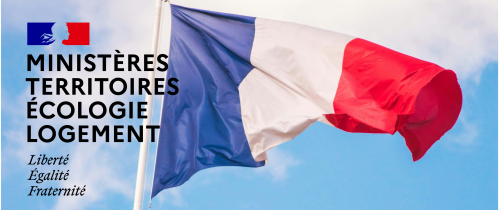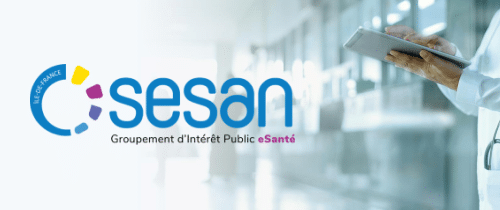Structuring and Pooling Digital Services with IT Systems Mapping
Customer Case - University Paris-Saclay: A unique IT system mapping platform deployed across 7 institutions and the transversal entity.
Key figures for the IT Systems mapping at University Paris-Saclay
- 50,000 students / 4,500 PhD candidates / 220 laboratories
- 7 intitutions involved (4 universities, 3 elite schools) + Common Scope
- 30 people in the shared IT department / 100 myCarto user accounts
- 674 digital services identified, including 80 shared services
A fragmented IT system with complex pooling challenges
University Paris-Saclay was created from the merger of 10 universities, 4 Grandes Écoles, 2 associated member universities, and 7 national research organizations. This center of excellence ranks 12th worldwide according to the Shanghai Ranking.
Originally planned as a full merger, the approach evolved towards progressive pooling, creating a major IT governance challenge: leveraging existing systems, rationalizing, pooling, and enriching digital services.
Project challenges for IT Systems mapping
Initially a transversal project focused on the Education IT system
The IT systems mapping initiative at Paris-Saclay was triggered by the change in the student information system, including APOGEE, used by the 3 universities. While mapping already existed in two institutions, it was necessary to scale up to address the project’s challenges and the governance of digital services resulting from the merger. Each entity already had its own IT system, which brought several difficulties :
- Proliferation of applications and digital services: shared vs. specific applications, growing IT service demands, etc.
- Complexity of Information Systems: interfaces, data exchanges, redundancies… “Most problems come from inter-application data flows,” says Jean-Marc Roussel.
- Multiplication of manual documentation tools (Excel, PowerPoint, Visio) which do not allow interoperability or effective updates and often keep undocumented knowledge with only a few specialists.
- Increased risk of errors and poorly anticipated impacts during IT system changes due to knowledge being too dependent on individuals.
- Difficulty identifying key business components to prioritize for pooling.
An IT system costs money… but if you don’t know what it contains, it costs even more.
Equipping the governance of shared and institution-specific digital services
The goal was to implement a unique IT system mapping solution to answer both operational questions from an institution’s IT department :
- Which applications are deployed?
- On which servers does each application run?
- Where is the data processed?
- For whom does each application operate?
And at the same time, strategic questions at the institution and broader scope level :
- What strategy should be implemented for better digital usage?
- How to balance evolving needs and budget constraints?
- How to successfully manage digital cooperation between institutions
- How to align needs, users, pooling, and customization?
Decisions have to be made, and to inform these choices, we need data on our Information Systems.
Jean-Marc Roussel – Researcher and Mapping Referent for ENS Paris-Saclay
In just a few years, I’ve seen the IT system grow from a handful of applications to over a hundred — and that within a single institution. If you add up all the IT systems of the University of Paris-Saclay’s entities, you get a ‘spaghetti plate’ of systems.
Documenting this in office files is not sustainable. To gain clarity, it is essential to set up a global and centralized IT system mapping !”
Dominique FIQUET – IT Systems Urbanist and Cartographer.
A shared IT Systems mapping approach
The MyCarto implementation project was structured around the need to replace and rationalize the various student information systems, including APOGEE.
Implementation steps followed a classic approach :
Inventory of applications and IT infrastructure
- Identification of existing systems (applications, infrastructures, data flows).
- Structuring a first version of the meta-model.
Migration and deployment of MyCarto
- Structuring repositories into 5 layers: organizational, functional, application, and infrastructure.
- Importing tool-assisted and static repositories (Excel, PowerPoint) into the new unified repository.
- Configuring the first maps with the graphic engine for visualizing flows and impacts.
Automation and interoperability
- Integration with Active Directory for access management.
- Setting up APIs to automatically retrieve data from databases like RV Tools or IT encyclopedias such as Technopedia.
Deployment and adoption by teams
- Training and awareness for IT and business teams.
- Progressive decentralization of data entry to ensure continuous updating.
- Change management support to secure adoption.
- Enrichment and evolution of the meta-model to handle scope expansion.
The trick "on the way"
As soon as we can automate data acquisition, we implement it. This is key to guarantee data quality and updating based on other repositories.
Jean-Marc Roussel – Mapping Referent for ENS Paris-Saclay
What impressed us most is the new core: the dynamic graphic engine of MyCarto. It allows us to generate maps in real time and provides excellent data exploitation.”
Jean-Marc ROUSSEL – Researcher and Mapping Referent for ENS Paris-Saclay.
Results and benefits of the approach
After reaching a critical mass of data in the mapping repositories, University Paris-Saclay quickly reaped the first benefits :
- myCarto saves us a significant amount of time on projects and increases project efficiency.
- Preparing communication for users is simplified, e.g., for a server shutdown with all hosted applications and impacted flows, including connected applications that will no longer function normally.
- The creation of repositories is sustainable and allows capitalizing information on critical applications. “Identifying the responsible persons is already very useful information…”
- Access management at different levels (institution or common) and depending on information nature allows capturing all useful data while ensuring the confidentiality of sensitive technical data.
- Dashboards are interactive, allowing direct switching between charts and detailed data. This interaction provides intuitive keys for decision-makers who alternate between overview and deep dive into topics.
- We easily answer business questions such as a recent one from the ministry: “Which applications are used by students and learners?” We build the query graphically and export the results simply to Excel.
- We rationalize costs by managing obsolescence and pooling services. For example, 90% of Master’s applications are now managed collectively.
The trick "on the way"
The tool is very simple and ergonomic to use, which has reduced training volume.
We focus competency transfer efforts on advanced users and institution referents.
Dominique FIQUET
To control IT system costs, we use maps showing servers with unsupported OS or software components that are outdated.
This helps explain to decision-makers (CIOs, policy makers, department heads) the hidden costs they don’t see.
Dominique FIQUET – IT Systems Urbanist and Cartographer.
Knowledge capitalization and contribution to IT system evolution
Implementing MyCarto has enabled University Paris-Saclay to improve IT governance and pooling despite a complex organizational context.
Unifying the IT system mapping brought immediate gains in visibility, impact anticipation, and decision-making.
With a unique and shared repository, Paris-Saclay lays the foundation for more effective and agile IT governance, enabling better collaboration between institutions and progressive rationalization of digital services.
I believe it is a ‘strategic’ mistake not to dedicate time to knowledge capitalization thinking ‘we’ll do it when we have time.’ But with daily operations, that time never comes. Documenting work must be planned; otherwise, one must compensate by doubling efforts occasionally or calling on external resources.
Jean-Marc ROUSSEL – Researcher and Mapping Referent for ENS Paris-Saclay
Additional information about the customer case
- (1) – University Paris-Saclay website
- (2) – Shanghai Ranking – detailed profile for University Paris-Saclay






